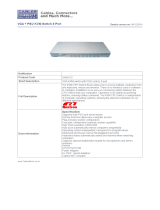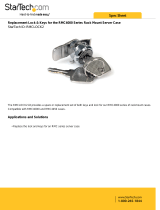
USING YOUR RIPC
15
Prerequisites
The RIPC features an embedded operating system and applications that offer a
variety of standard user interfaces. The information following will describe
their use in detail. All of the interfaces are accessed using the
TCP/IP protocol, and can be used over either the built-in Ethernet adapter
or the modem.
The following interfaces are supported:
HTTP/HTTPS: The most complete access is provided by an embedded web
server and the RIPC’s environment can be controlled by a standard web
browser. Depending on the web browser, you can access the RIPC’s card using
the unsecured HTTP protocol or, if the browser supports it, the encrypted
HTTPS protocol. We recommend use of HTTPS whenever possible.
Telnet: A standard telnet client can be used to access an arbitrary device
connected to one of the RIPC’s serial ports via a terminal mode.
In order to use the Remote Access window of your managed host system, the
browser must include a Java Runtime Environment, version 1.1 or higher.
However, even if the used browser has no Java support, such as is the case on
small handheld devices, you can still maintain your remote host system using
the administration forms displayed by the browser itself.
We recommend the following browsers for an unsecured connection to
the RIPC:
Microsoft Internet Explorer version 5.5 or higher on Windows 98, Me, 2000,
and XP
Netscape® Navigator® 7.0 or Mozilla 1.0 on Windows 98, Me, 2000, XP, Linux®
and other UNIX®-like operating systems
In order to access the remote host system using a securely encrypted
connection, you need a browser that supports the HTTPS protocol. Strong
security is only assured if you are using key length of 128 bits. Many older
browsers do not have a strong 128-bit encryption algorithm due to former
export regulations of US authorities. Internet Explorer 5.0, which is included in
Windows Me and 2000, supports a key length of only 56 bits. You can read
about the key length of Internet Explorer under the menu points “?” and
“Info”. The dialog box displays a hyperlink that leads you to information on
upgrading your browser to a state-of-the-art encryption scheme.
P74238-A-F1DE101G-man.qxd 4/10/03 4:25 PM Page 15






















